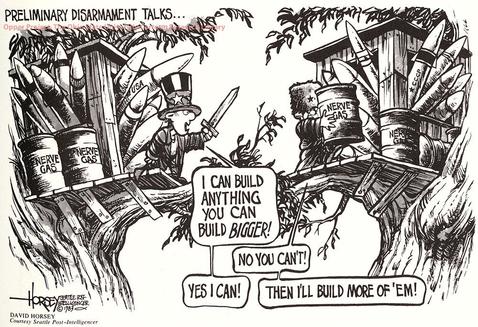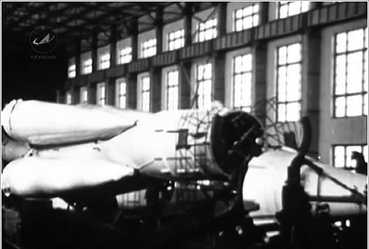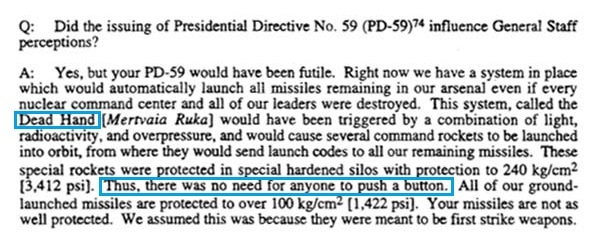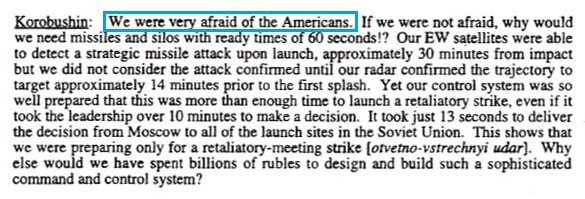The existence of ICBMs and the poor relationship between the Soviet Union and US led paranoid tension to thrive, especially within the government.
"But the world could not continue developing as it had,
with the stark menace of nuclear war ever present."
-Mikhail Gorbachev (final leader of the Soviet Union) [1]
The Intercontinental Ballistic Missile
|
The invention of the Intercontinental Ballistic Missile (ICBM) during the mid-1900s revolutionized modern warfare. These missiles were capable of delivering nuclear weapons while being immune to defense measures. [40] Its extremely long range ensured that no country was safe from it, which became a major source of paranoia. |
The Arms Race
 Political Cartoon [19]
Political Cartoon [19]
The United States’ and Soviet Union’s solution was to stockpile more nuclear warheads to deter each other in what was known as the "Arms Race” [43]. Under the theory of Mutually Assured Destruction (MAD), if one side were to attack, then the other side would retaliate, ultimately resulting in the destruction of both countries. [41]
The Dead Hand
The Soviet leaders feared a "decapitation strike" — a military tactic that aims to incapacitate the leadership of a government. Their paranoia manifested in the creation of an automatic nuclear-control system called the Dead Hand. Even if everyone died, the Dead Hand would still be able to operate and retaliate. [27] The Soviet Union was utterly committed to MAD.
Interview of Former Soviet Deputy Chief of Strategic Rocket Forces [12]:
[Click images to enlarge]
[Click images to enlarge]
| ||||||||
"The central thing was the public had no control. You were at the mercy of political decision makers. Apart from the fear that one side would do something stupid, there was also the fear of technology and the question of 'what if an accident happened'."
-Dr Christopher Laucht: BBC (Leeds University History Lecturer) [42]



